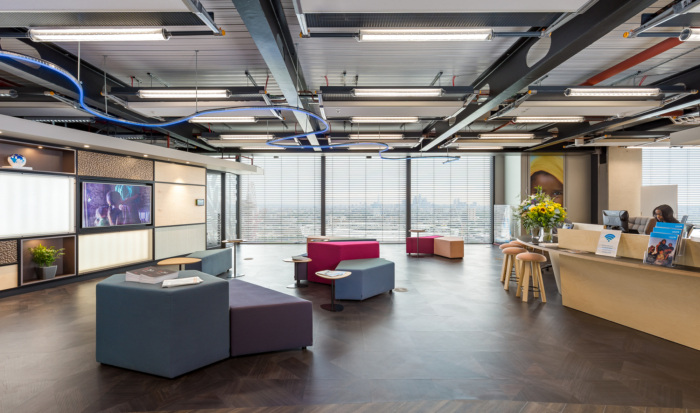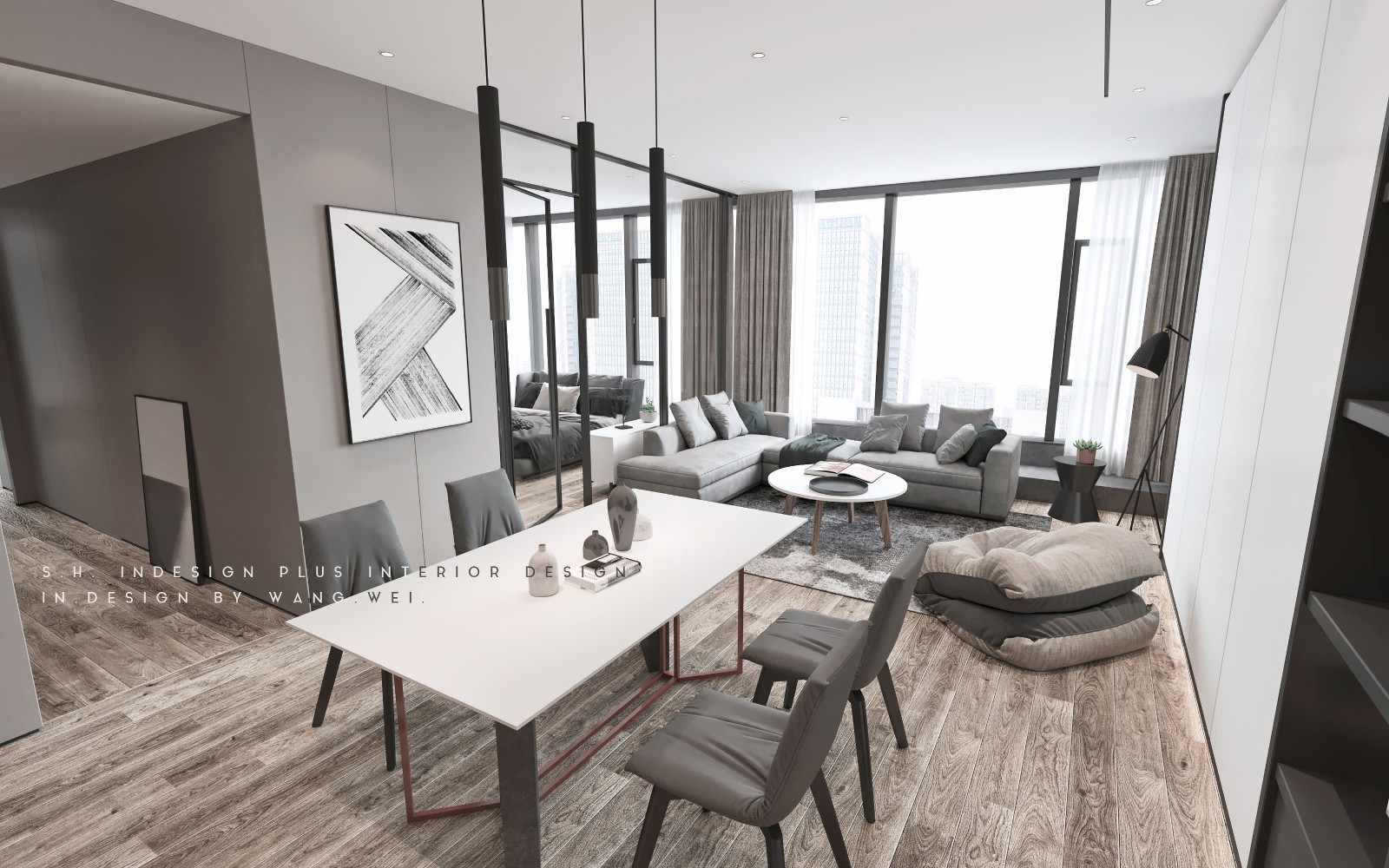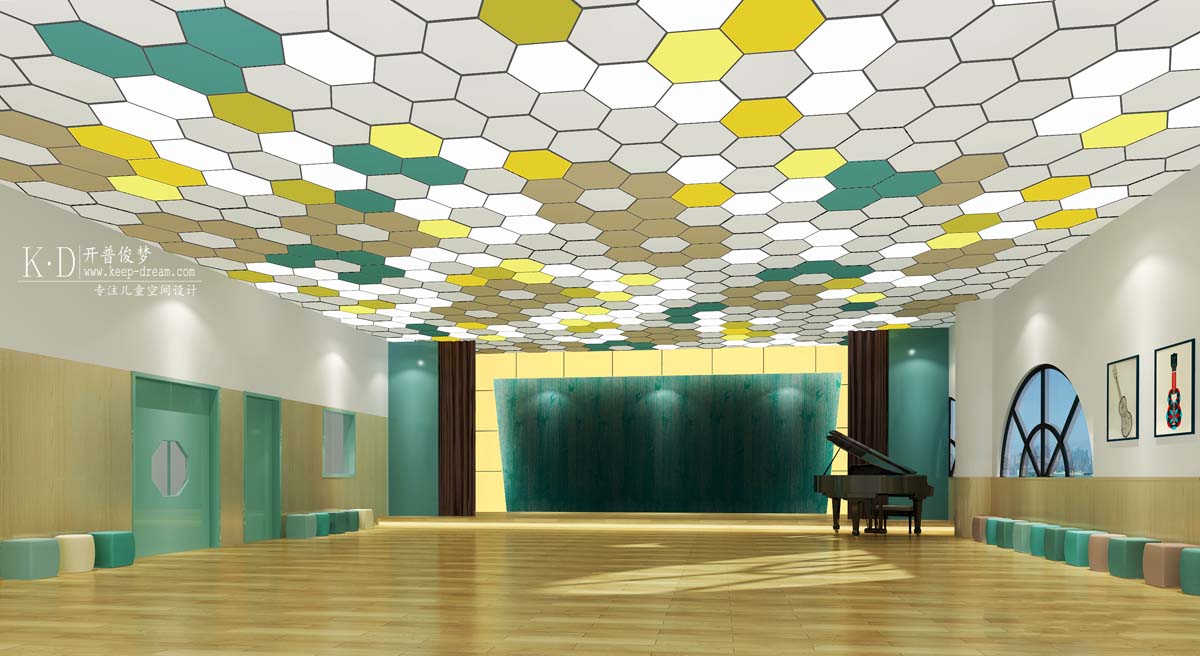HF - VUC Fyn Complex CEBRA
2015-05-21 03:00
Text description provided by the architects. HF & VUC Fyn
丹麦建筑工作室CEBRA在丹麦欧登塞市中心完成了一个成人教育中心。位于中央站旁边的hf
Danish architecture studio CEBRA has completed an adult education centre in the heart of the city of Odense, Denmark. Located next to the central station the HF & VUC Fyn complex marks an important step towards the realisation of a new city campus that ties the inner city and the harbour together. By combining elements from its coarse industrial neighbours with an embracing and transparent interior organisation the HF & VUC Fyn aims at bridging between the scale of the harbour and urban life. The building’s robust and unassuming exterior is contrasted by an inner spatial diversity of rounded forms that create a varied learning environment for 1.300 students – an inspiring and vivid school that continuously suggests new ways of use and makes room for individual learning needs in a collective building.
The school adapts to the students
“基本的想法是设计一所看起来不像学校的学校。完成教育程度的一般概念是一种可信赖的保障,这一概念要经过一次基本的审查。我们认识到,为了适应不断变化的现实,我们必须不断学习。像HF这样的成人教育中心
“The basic idea was to design a school that doesn’t look like a school. The general conception of a completed educational degree as a security to fall back on is subjected to a fundamental review. We have realized that we must learn constantly in order to adapt to an ever-changing reality. An adult education centre like HF & VUC Fyn will play an essential role in maintaining a society’s competences in the future,” explains architect and co-founding partner Carsten Primdahl. “Therefore, it is essential that it is built on lasting values that revolve around the individual. The building has to adapt to the student and not the other way around. That is why the project focuses on creating a building with specialized, yet diverse environments, where students can find spaces and settings that match their own preferred learning style,” he continuous.
因此,这种设计是基于一种愿望,即为一种学习文化创造一个多功能的框架,在这种文化中,终身学习和教育是成年人个人成长与社会发展的内在组成部分。这座建筑的特点是一套弧形和圆形系统,它切断了理性卷的规则形式,创造了一个多方面的空间环境,考虑到学校的不同功能:一个教学场所、一个工作场所和一个供不同用户群体参加的社会聚会场所。
Therefore, the design is based on the aspiration to create a versatile framework for a learning culture, in which lifelong learning and education form an inherent part of the adult individual’s personal growth in pace with society’s development. The building is characterized by a system of curved lines and rounded forms, which cut through the rational volume’s regular form and create a multifaceted spatial setting that takes into account the school’s different functions: an arena for teaching and learning, a workplace and a social meeting place for a diverse group of users.
这座建筑是围绕着一个透明的、非常活跃的中庭空间组织起来的,名为Agora,以古希腊城市的公共集会场所命名,这些城市构成了这个城市的政治、精神和艺术生活的中心。这一中心空间不仅是社会活动的论坛,也是与教室和学校的附加功能相联系和相互作用的重要学习环境。圆形的形状形成一系列阳台和平台,在中庭之间移动重叠,以创造单一,双和三高空间,不同程度的日光,透明度和亲密程度。
The building is organized around a transparent and very active atrium space, called the Agora and named after the public gathering place in ancient Greek cities that constituted the centre of political, spiritual and artistic life in the city state. This central space not only functions as a forum for social activities, but also as an essential learning environment in connection and interplay with the class rooms and the school’s additional functions. The rounded shapes form a series of balconies and platforms with shifting overlaps across the atrium in order to create single, double and triple height spaces with varying degrees of daylight, transparency and intimacy.
活动水平从阿戈拉逐渐下降,并向外,最平静和私人空间位于建筑的外部边缘。同时,这一组织原则从一个计划转移到另一个部门,在地面一级活动和透明度最高,在顶层有思考空间。不同楼层的功能是以这样的方式组织的,教室和特殊房间之间的关系允许交叉学科和面向项目的课程计划。因此,学生可以转向那些空间和环境,这符合他们的个人学习风格。
The levels of activity decrease gradually from the Agora and outwards with the most calm and private spaces located along the building’s outer edges. At the same time, this organizational principle is transferred from plan to section with the highest levels of activity and transparency at ground level and spaces for contemplation at the top floor. The functions on the different floors are organised in such a way, that the relations between class rooms and special rooms allow for cross-disciplinary and project-oriented lesson-plans. Students can thus turn to those spaces and environments, which match their individual learning style.
The building and the city
一系列弯曲的切口进入建筑,继续以正式的室内语言,让建筑与周围的城市互动。在主入口和一楼咖啡厅周围,他们创造了一个有屋顶的室外空间,同时在上层为露台腾出空间。一方面,露台提供对城市,休息区和室外学习区的看法。另一方面,切口缩小了大型建筑体积的规模,突出了特定的功能。
A series of curved incisions into the building continue to formal language of the interior and let the building interact with the surrounding city. Around the main entrance and the ground floor café they create a roofed outdoor space while they make room for terraces on the upper floors. On the one hand, the terraces provide views over the city, lounge areas and outdoor study zones. On the other hand, the incisions reduce the scale of the large building volume and accentuate specific functions.
外立面采用铝制盖板和扩大的铝网,将外部与周围以及附近港口的工业结构联系起来。同时,固体板和多孔网格的结合有助于一个不同的表达方式,在一天的过程中,取决于阳光和天气条件。此外,选定的网状部分是背光与LED灯,以强调建筑物在夜间。
The façade uses a pattern of aluminium cover plates and expanded aluminium mesh to relate the exterior to its surrounding and the industrial structures of the nearby harbour. At the same time, the combination of solid plates and porous mesh contributes to a varied expression that changes over the course of the day and depending on sunlight and weather conditions. In addition, selected mesh sections are backlit with LED lights in order to accentuate the building at night.
Project size 12.500 m² GFA, 1.100 m2 parking basement
Photographs Mikkel Frost / CEBRA
 举报
举报
别默默的看了,快登录帮我评论一下吧!:)
注册
登录
更多评论
相关文章
-

描边风设计中,最容易犯的8种问题分析
2018年走过了四分之一,LOGO设计趋势也清晰了LOGO设计
-

描边风设计中,最容易犯的8种问题分析
2018年走过了四分之一,LOGO设计趋势也清晰了LOGO设计
-

描边风设计中,最容易犯的8种问题分析
2018年走过了四分之一,LOGO设计趋势也清晰了LOGO设计












































































